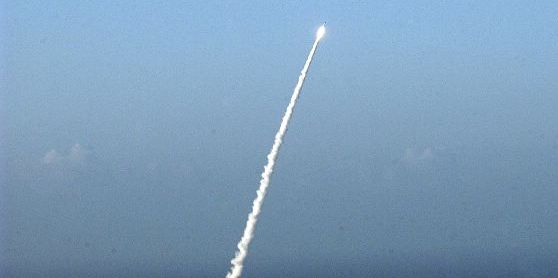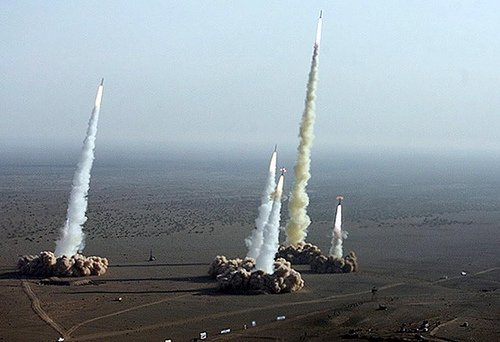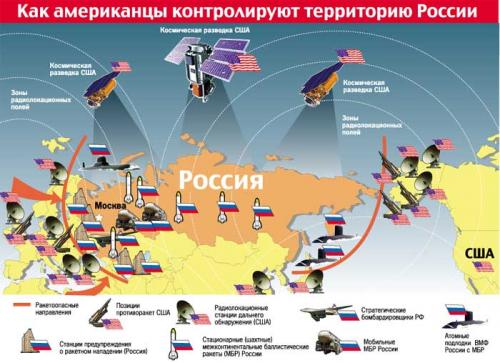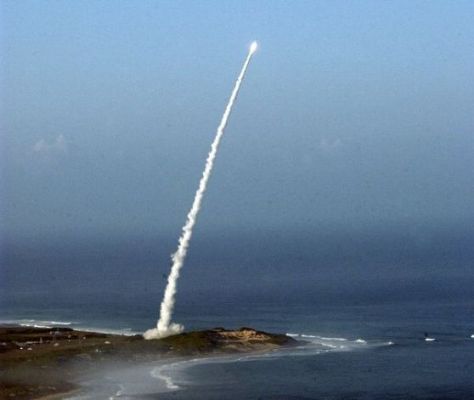
The Kremlin’s latest move to deploy missiles in Kaliningrad is the first time since the Cold War that Russia has “declared its intention to create a military threat to the West.” Yet the nature of the threat does not represent a fundamental challenge to U.S. or European security and has been largely overblown on both sides.
President Dmitri Medvedev announced in his first state-of-the-nation address plans to deploy the short-range SS-26 (“Iskander”) missiles in the Russian exclave of Kaliningrad if the U.S. goes ahead with its European Ballistic Missile Defense System (BMDS). Medvedev told parliament that the deployment would “neutralize” U.S. plans for a missile defense shield based in Poland and the Czech Republic, which the U.S. claims as vital in defending against missile attacks from ‘rogue states’ such as Iran.
Opposition to the American plans has been vehement in Moscow, with Russia’s NATO envoy Dmitry Rogozin claiming that the planned anti-ballistic missile system is aimed at Russia, and not at future rogue threats from the Middle East as Washington claims. Russian concerns stem from the fact that while the ten proposed missile-defense units do not represent a threat in and of themselves, the deployment sets a precedent for greater buildup of U.S. missiles in Eastern Europe. The Kremlin fears that this will undermine Russia’s military doctrine for the European theater, which relies on first strike capability to compensate for the inferiority of their conventional forces vis-à-vis NATO.
However, the Russian counter-threat to station missiles and radio jammers in Kaliningrad won’t alter the current strategic balance, nor significantly threaten European security as Western politicians contend. For example, the U.S. Defense Secretary Robert Gates called the Russian move “provocative,’ and NATO spokesman Robert Pszczel said the “placing of these Iskander missiles in the Kaliningrad region would not help NATO and Russia to improve their relationship.” Even the German Foreign Minister Frank-Walter Steinmeier broke with his typically pro-Moscow stance, stating that the Russian threat was “a wrong signal at the wrong time.” This kind of indignant reaction, however, is unwarranted. The Russian threat is more overblown rhetoric than meaningful strategy.
There are three reasons why.
Iskander Capabilities
First, the missiles in Kaliningrad are not a game changer. The new generation of Iskanders deliver a conventional 900-pound warhead to targets up to 400 kilometers away, putting them within range of the BMDS units in northern Poland. The Iskanders, launched from mobile trucks, follow a flat trajectory and are capable of violent evasive maneuvers, including the deployment of decoys that allow the missiles to bypass hostile countermeasures. This gives them a high probability of successfully evading BMDS units in Poland that are designed to take down ICBMs coasting above the atmosphere, rather than Iskander missiles which do not follow a traditional ballistic trajectory. In order to protect DoD assets from Iskander strikes, the U.S. would have to rely on short- to medium-range interceptors such as the Patriot (PAC-3) and Aegis systems, capable only of limited area defense. True, the Iskander is an offensive weapon capable of targeting missile defense sites in Poland and the Czech Republic, but this does not mean the U.S. BDMS will be “neutralized” as Medvedev claims. Nor does it increase the likelihood that Russia will seek to use these missiles in a pre-emptive strike. Such an attack would result in immediate and overwhelming retaliation by NATO, which the Kremlin will continue to avoid. Military strategy, therefore, will not fundamentally change if the construction of BMDS or the stationing of missiles in Kaliningrad goes ahead.
A Strategic Game
Second, the Russians see the Iskander deployment as one element in a complex game of strategy with NATO in which posturing and bravado are of greater consequence than substantive military tactics. Possessing the technology and capability to target U.S. missile defense assets in Poland and the Czech Republic is entirely different from actually launching strikes against them. Because of Russia’s political system, which relies on strong authoritarian leadership especially in the realm of foreign policy, Medvedev must seem capable of countering U.S. and NATO threats which the Russian population is led to believe represent the Federation’s main security threat. The West makes one move – the Russians counter, and so on. Moreover, the timing of the missile threat, coming only one day after American elections, points to the fact that it is more of a political ploy – a “clumsy effort” to test the new U.S. president’s mettle as one analyst, George Perkovich, put it.
 |
| Russian map entitled “How Americans control Russian territory” |
The Real Threat to Russia
Third, as suggested by the map above, there is a feeling in Russia that the U.S. has them surrounded. Medvedev talks of “the emergence of a global missile defense system, the surrounding of Russia with military bases, unrestrained NATO expansion and other ‘gifts’.” NATO expansion has, until now, proceeded unchecked, and prospects for Ukrainian and Georgian accession to the Alliance are eagerly debated across the political spectrum. Western condemnation of Russia’s justifiable missile deployment in Kaliningrad will only encourage this siege mentality. Instead, NATO and the U.S. should refocus efforts towards cooperation with Russia on missile defense, and resist the temptation to treat every Russian objection and threat as significant or credible. After all, Moscow is just as concerned about a potentially nuclear-capable Iran launching a missile across Russia’s southern border. That is why then-President Vladimir Putin suggested the joint use of the Qabala air and missile defense installation in Azerbaijan back in 2007. Although some analysts such as Alexander Goltz considered it a ploy, by making the offer Putin implicitly acknowledged the validity of the U.S. threat perception concerning Iran. In addition, Moscow’s repeated calls for reform of the 1987 Intermediate Nuclear Forces (INF) Treaty so that it applies not just to European, but to global (read Chinese) threats is evidence that Russia will sometimes say one thing and mean another. However, Russia dares not announce that its “allies” might present its most immediate security threat.
The challenge that the U.S. and its allies face is in convincing Russia to cooperate as a partner on missile defense, and allay the deep-rooted fears they hold with regards to the NATO alliance. If the Americans can’t, then perhaps developments in Iran, following yesterday’s test of a new long-range missile, will persuade them of the real threat.
Neil Leslie is an assistant editor at the Atlantic Council. His views are his own. Photo Credit: Flickr
Image: missile-defense%20(resized)_1.jpg

